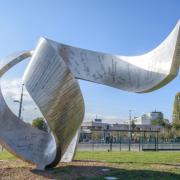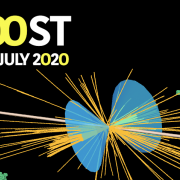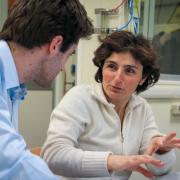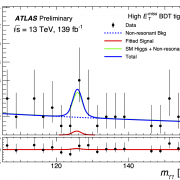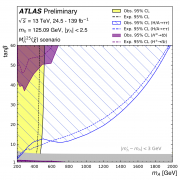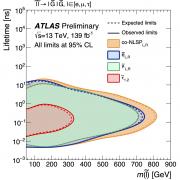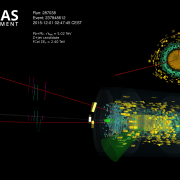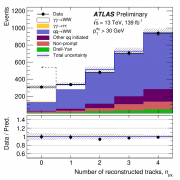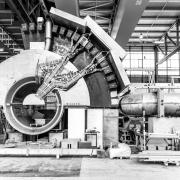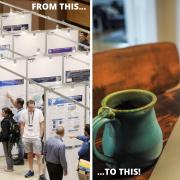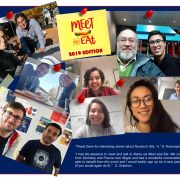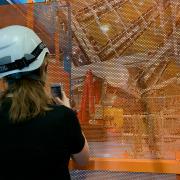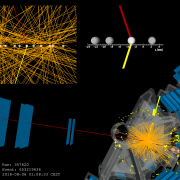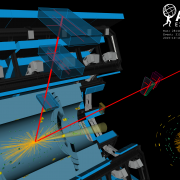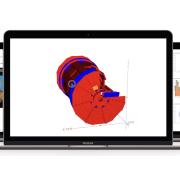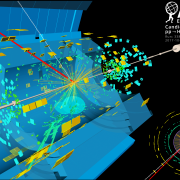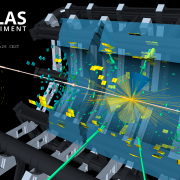Access to Collaboration Site and Physics Results
Updates tagged: “data preparation”
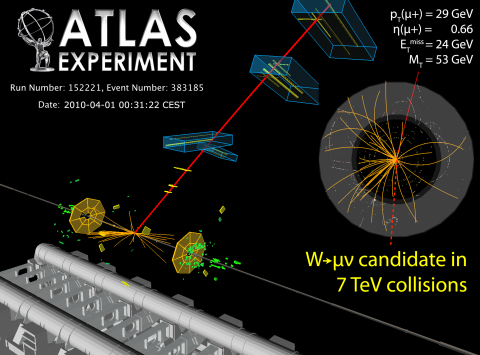
One in a few million
ATLAS has been designed to detect rare events in high energy proton-proton collisions. ATLAS ultimate goal is to measure events as rare as one in several thousand billions, but we are modest (for the time being) waiting for the luminosity to rise.
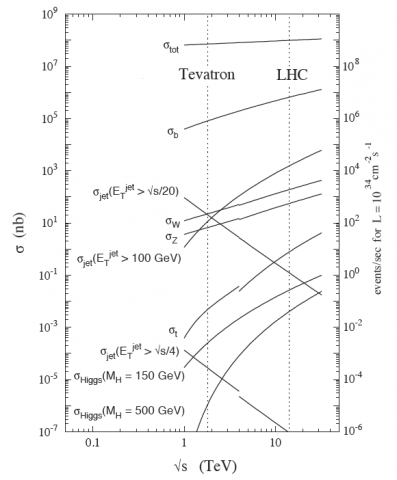
Its All About The Lumi!
Now that the LHC has established colliding stable beams at a center of mass energy of 7 TeV, the next step to maximize its physics reach is to provide the most luminosity possible. As Leo posted, we need to increase the number of proton - proton collisions to make sure we have a chance of seeing the physics that we are looking for. The reason for that is because different p.hysics processes have different probabilities. These probabilities are referred to as cross-sections (in a vague reference to the particle's size). If one multiplies a cross section by a luminosity than what you get is a number of events.
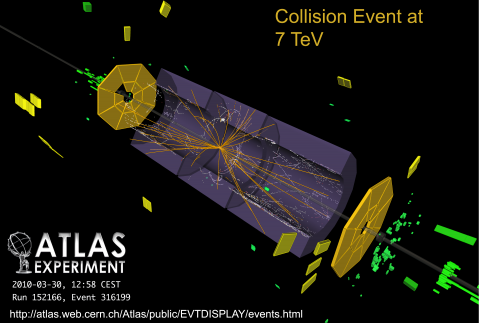
Let The Physics Begin!
After decades of planning. After years of delays and immeasureable amounts of patience and hard work. The physics operations of the LHC has begun!
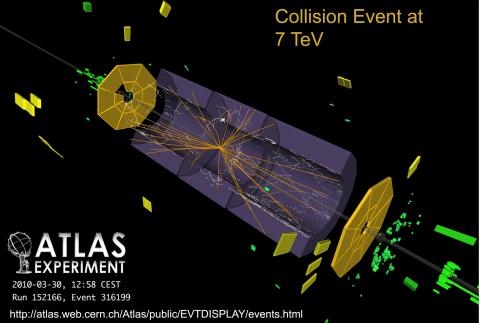
First collisions in ATLAS
A few days ago, loud cheers and happy faces filled the ATLAS Control Room while the whole detector lit up: protons are back at the experiment's door, and everybody forgot in a second the long year of waiting for the Large Hadron Collider (LHC) to resume operation.
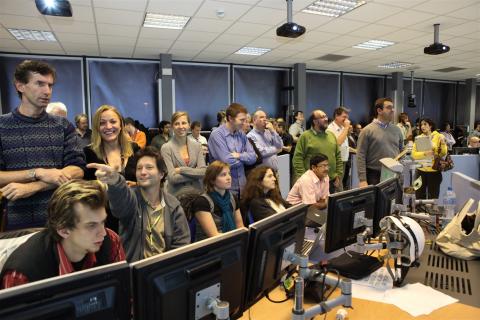
LHC beams and events back in ATLAS
Loud cheers and happy faces fill the ATLAS Control Room while the whole detector lights up: protons are back today at the experiment's door, and everybody forgets in a second the long year of waiting for the Large Hadron Collider (LHC) to resume operation.
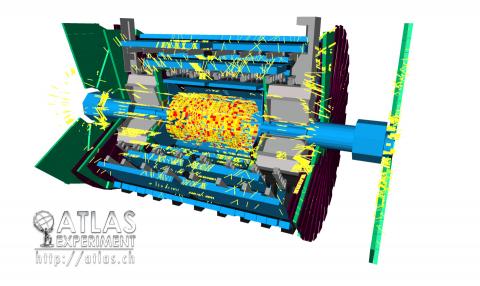
ATLAS preparing for collisions in mid-2009
The full ATLAS Experiment has been operational and taking cosmic ray data since September 2008, and high-energy collisions are scheduled for late summer 2009. Data from cosmic rays that hit the ATLAS detector are valuable to calibrate and synchronize the many detector elements. Even more exciting were the so-called “splash events” that occurred as the LHC was being tuned up starting 10 September 2008.
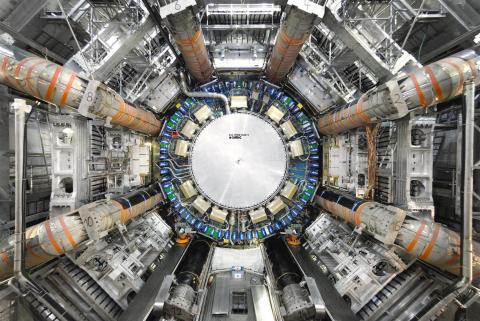
Dress Rehearsal for ATLAS debut
Dave Charlton and his team have a mammoth job on their hands; Charlton has been tasked with coordinating the Full Dress Rehearsal (FDR) of the computing and data analysis processes of the ATLAS experiment, a run–through which he describes as "essential, almost as much as ensuring the detector itself actually works".
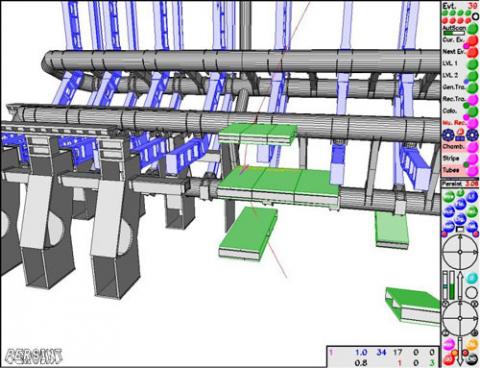
Triggering and measuring bent cosmic muon tracks with the muon spectrometer barrel for the first time
Data have recently been collected with the toroidal magnetic field will provide for the first time the measurement of the cosmic ray muons' momenta in the ATLAS experiment and allow studies on trigger optimization, chamber calibration, chamber alignment and magnetic field maps. More than one million events were acquired. They are now being analyzed by enthusiastic members of the collaboration.
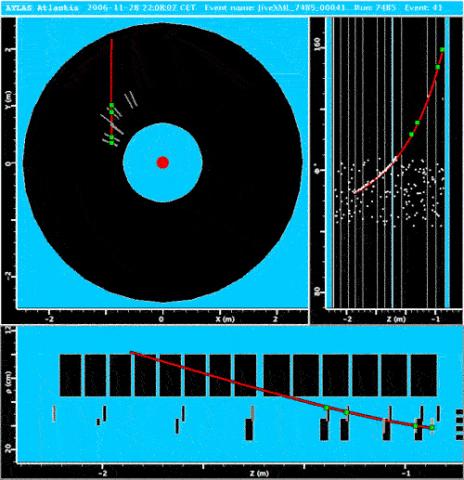
First combined SCT/TRT end-cap cosmic rays seen in building SR1
Following the successful combined SCT/TRT barrel test in the Spring 2006, a similar combined SCT/TRT endcap test is currently being performed in the SR1 building on the ATLAS experimental site at CERN. One quadrant of the SCT and two sectors of the TRT have been cabled up and are used in this test. The data taking and combined testing is expected to last until December 11th.
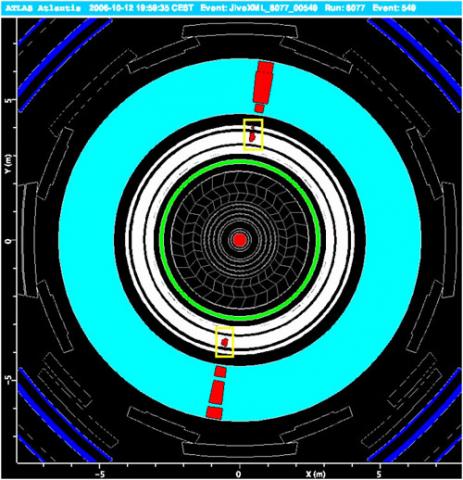
First physics pulses in the barrel electromagnetic calorimeter with cosmic rays
The electromagnetic barrel calorimeter was installed in its final position in October 2005. Since then, the calorimeter is being equipped with front-end electronics. Starting in April 2006, electronics calibration runs are taken a few times per week to debug the electronics and to study the performance in the pit (stability, noise). Today, 10 out of the 32 Front End crates are being read out, amounting to about 35000 channels.


